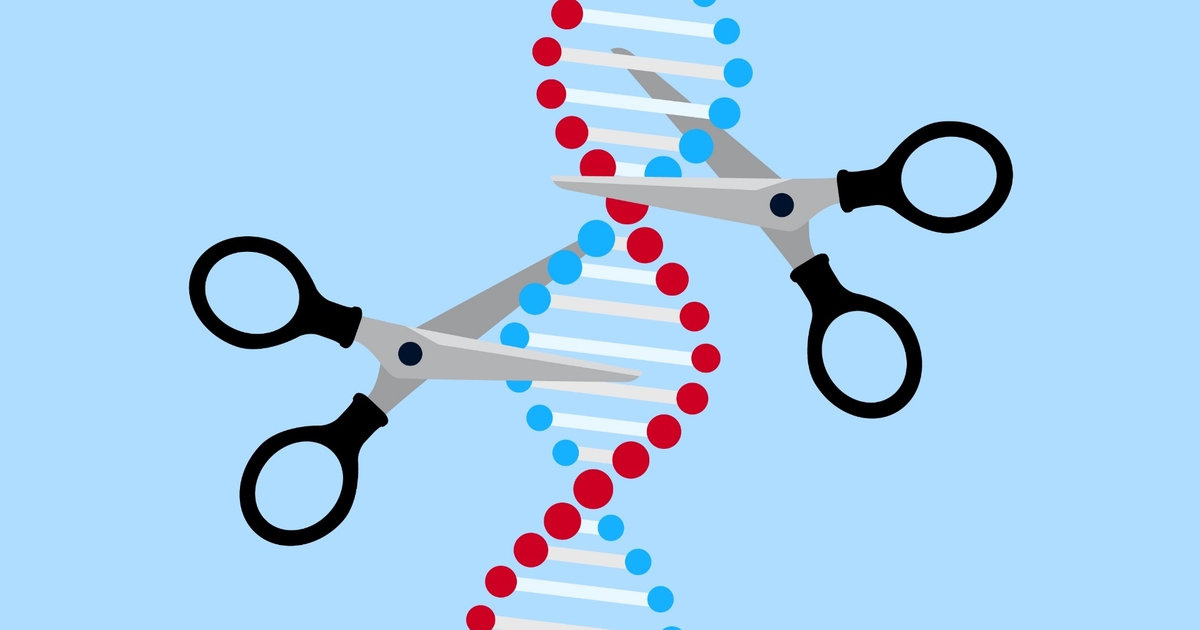
To understand the incredible potential of genome editing techniques, it is essential to delve into the captivating facts that underpin this revolutionary field of biology. Genome editing refers to the precise modification of an organism’s DNA, allowing scientists to make targeted changes to the genetic code. This breakthrough technology has sparked immense excitement and debate across the scientific community and beyond. From its origins to the latest advancements, this article will take you on a fascinating journey through 14 captivating facts about genome editing techniques. Whether you’re a biologist, a science enthusiast, or simply curious about the intricacies of genetic engineering, prepare to be awestruck by the immense power and potential of these cutting-edge techniques.
Key Takeaways:
- Genome editing techniques like CRISPR Cas9 and TALENs allow scientists to precisely modify DNA, revolutionizing human genetics and offering potential cures for genetic diseases.
- Ethical debates surround genome editing, including concerns about designer babies and off-target effects, while the future promises even more precise and efficient techniques for genetic engineering.
The Discovery of CRISPR Revolutionized Genome Editing
Genome editing techniques have come a long way since the discovery of CRISPR (Clustered Regularly Interspaced Short Palindromic Repeats) in This revolutionary tool allows scientists to precisely edit DNA, opening up new possibilities for understanding and manipulating genetic material.
CRISPR Cas9 – The Swiss Army Knife of Genome Editing
One of the most widely used genome editing techniques is CRISPR CasThis system utilizes RNA-guided Cas9 nuclease to target specific DNA sequences and introduce changes or modifications. Its versatility has made it an invaluable tool in various fields of research and biotechnology.
The Power of ZFNs in Genome Editing
Zinc Finger Nucleases (ZFNs) are another important genome editing technique. These artificial restriction enzymes can be designed to bind and cut specific DNA sequences, allowing for targeted modifications. ZFNs have been used successfully in both research and therapeutic applications.
TALENs – Precision Tools for Genome Editing
Transcription Activator-Like Effector Nucleases (TALENs) offer another approach to genome editing. These designer proteins can be engineered to bind to specific DNA sequences and introduce precise changes. TALENs have proven to be effective in a wide range of organisms, including plants, animals, and even humans.
Homologous Recombination – Fine-Tuning Genome Editing
Homologous Recombination is a naturally occurring process that can be harnessed for genome editing. By introducing a DNA template, scientists can guide the repair of double-stranded breaks in DNA, allowing for precise modifications. This technique has been particularly useful in gene therapy research.
Genome Editing in Agriculture
The application of genome editing techniques in agriculture holds great promise. By modifying the genetic traits of crops, scientists can develop more resilient and nutritious varieties, contributing to food security and sustainability.
Unlocking the Mysteries of Human Genetics
Genome editing techniques have revolutionized the study of human genetics. By introducing specific mutations in human cells, scientists can gain insights into the underlying mechanisms of genetic diseases and potentially develop targeted therapies.
Creating Disease Models for Biomedical Research
Genome editing allows for the creation of precise disease models in various organisms, including animals and cell cultures. These models provide valuable tools for studying complex diseases and testing potential treatments.
Ethical Considerations in Genome Editing
The development and use of genome editing techniques have raised important ethical questions. The possibility of making heritable changes in human DNA and altering the germline has sparked debates on the social and moral implications of these technologies.
Controversy Surrounding Designer Babies
One of the most contentious aspects of genome editing is the potential for creating “designer babies.” This term refers to the deliberate modification of embryos to enhance their genetic traits, raising concerns about societal inequality and the commodification of life.
Genome Editing as a Tool for Conservation
Genome editing techniques can aid in conservation efforts by preserving endangered species. By manipulating the genes of individuals within a population, scientists can potentially increase their resilience to environmental challenges.
Challenges in Off-Target Effects
Although genome editing techniques offer immense potential, they are not without challenges. Off-target effects, where unintended changes occur in the genome, are a significant concern that researchers are actively working to minimize.
Advancements in Delivery Systems
Delivery systems for genome editing tools have also seen significant advancements. The development of efficient and safe methods for introducing editing machinery into target cells has expanded the possibilities for therapeutic applications.
The Future of Genome Editing
The field of genome editing is constantly evolving, and the future holds exciting possibilities. Continued research and innovation will likely lead to even more precise and efficient techniques, opening up new frontiers in genetic engineering.
Conclusion
Genome editing techniques have revolutionized the field of biology and have opened up a world of possibilities for scientists and researchers. From gene therapy to agricultural advancements, these techniques have the potential to improve human health, enhance crop yields, and preserve endangered species. As we continue to explore and refine these methods, it is important to consider the ethical implications and ensure responsible use. With ongoing advancements and increasing understanding of genome editing, the future holds tremendous promise for the field of biology and its applications.
FAQs
1. What is genome editing?
Genome editing refers to the precise modification of an organism’s DNA using various techniques such as CRISPR-Cas9, TALENs, or zinc finger nucleases. It allows researchers to add, remove, or modify specific genetic material.
2. How does CRISPR-Cas9 work?
CRISPR-Cas9 is a genome editing technique that utilizes a guide RNA sequence to target specific genes. The Cas9 enzyme then cuts the DNA at the desired location, allowing for the introduction of desired changes through either repair mechanisms or the insertion of new genetic material.
3. What are the applications of genome editing?
Genome editing has a wide range of applications in various fields. It can be used for gene therapy to treat genetic diseases, crop improvement to enhance yield and nutritional content, environmental conservation to protect endangered species, and basic research to understand gene function.
4. Are there any ethical concerns with genome editing?
Yes, genome editing raises ethical concerns, especially when it comes to editing germline cells that can be passed on to future generations. There are ethical considerations regarding the unintended consequences, potential misuse, and the need for transparency and regulatory oversight in genome editing research.
5. What are the future prospects of genome editing?
The future of genome editing looks promising, with ongoing advancements and potential applications in various fields. It has the potential to revolutionize healthcare, agriculture, and conservation efforts, improving human health, crop yields, and biodiversity. However, further research and proper regulation are necessary to ensure responsible and ethical use of these technologies.
Genome editing techniques are revolutionizing biology, but there's still much to learn. Dive deeper into CRISPR-Cas9, a powerful tool for precise genetic modifications. Explore gene therapy's potential to treat diseases by altering genes within cells. Discover synthetic biology's role in creating novel biological systems and organisms with desired characteristics.
Was this page helpful?
Our commitment to delivering trustworthy and engaging content is at the heart of what we do. Each fact on our site is contributed by real users like you, bringing a wealth of diverse insights and information. To ensure the highest standards of accuracy and reliability, our dedicated editors meticulously review each submission. This process guarantees that the facts we share are not only fascinating but also credible. Trust in our commitment to quality and authenticity as you explore and learn with us.


